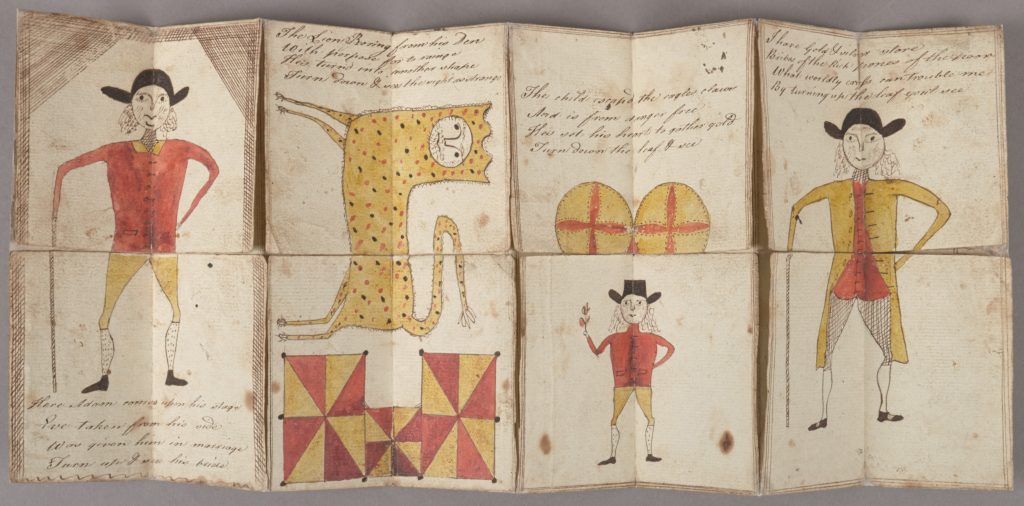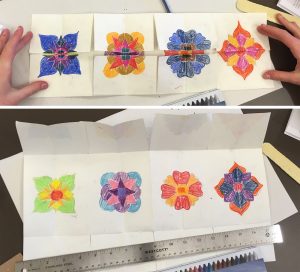We have written here a few times about teaching bookbinding skills to local Girl Scouts so that they can get their Book Arts Badge (Post 1 and Post 2) . In addition to learning about preservation activities of cultural institutions, the workshop participants learn about the components of a book, and make three different book structures. Having done this workshop a couple of times, we thought it would be nice to change up some of the types of books that we make. Luckily, the recently acquired Lisa Unger Baskin Collection provided an object of inspiration: this movable book.
See full item description in the online exhibit.
Also known as a metamorphosis or harlequinade, this item was made by Elizabeth Winspear, possibly a young woman of New England, in 1799. The book is composed of a single sheet, folded in an accordion style to form 4 panels. Each panel has a flap at top and bottom. The manuscript text and drawings tell a story using biblical figures and mythical beasts, ending with a kind of memento mori. The reader is instructed by the text to turn leaves up or down to see the transformation.
Although this item was made entirely by hand, the text and imagery are a very faithful representation of the genre. Examples of these movable books can be found from both Europe and North America, dating from the 17th to 19th centuries – and the story is remarkably consistent. See for example, this version printed in England in 1650.


I’ve said before that the most popular part of our Book Arts Badge workshop is the last hour or so, in which the scouts have time to decorate their books. This type of movable book seemed like the perfect format to let the scouts unleash their creativity. After talking about Elizabeth Winspear’s book and showing them how to make the folds, we let them design their own metamorphoses. Here are some examples:
(Click each image to enlarge)
The scouts had a lot of fun with this structure and we really enjoyed seeing what they could do with it. It is amazing how an item produced by a young woman hundreds of years ago can inspire young women today to create book art of their own. Watching students interact with and respond to items from the library’s collection really brings the importance of preservation of cultural heritage into focus. We will definitely make more books like this in our future workshops.
If historical movable books are a topic of interest, you can see more examples of metamorphoses like this one at Learning as Play, hosted by Penn State University. Jacquiline Reid-Walsh has also written a book on the subject, titled Interactive Books: Playful Media Before Pop-Ups (2018). You may be interested in another genre of movable books, anatomical flap books, with many examples from Duke’s collection featured in this online exhibit. Highlights from the Baskin Collection are currently on display until June of this year in the Biddle exhibit suite, located just inside the main entrance of Perkins Library.






